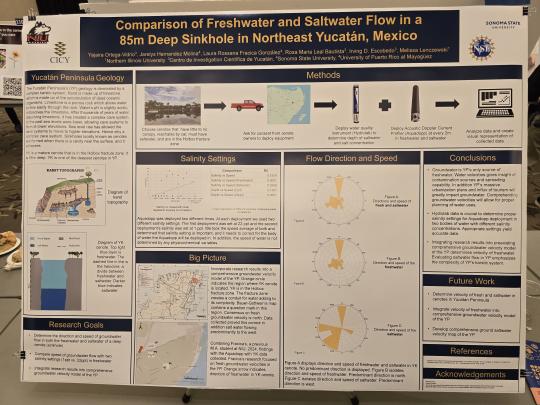Comparison of Freshwater and Saltwater Flow in a 85m Deep Sinkhole in Northeast Yucatán, Mexico

Abstract
The Yucatán Peninsula's (YP) geology is dominated by a complex karstic system. Karst is made up of limestone, which is made up of the accumulation of dead oceanic organisms. Limestone is a porous rock which allows water to flow easily through the rock. Water's pH is slightly acidic, it dissolves the limestone. After thousands of years of water dissolving limestone, it has created a complex cave system. In the past levels were lower, allowing cave systems to form at lower elevations. Sea level rise has allowed the cave systems to form at lower elevations. Sea level rise has allowed the cave systems to move to higher elevations. Hence why a complex cave system. Sinkholes locally known as cenotes are formed when there is a cavity near the surface, and it collapses.
YK is a mature cenote that is in the Hoblox fracture zone. It is 85m deep. YK is one of the deepest cenotes in YP.
Project Date: Spring 2025
Students:
Yajaira Ortega-Vidrio
Jarelys Hernandez Molina
Laura Rossana Fracica Gonzàlez
Rosa Maria Leal Bautista
Irving D. Escobedo
Melissa Lenczewski
Location:
- Sonoma State University
Special thanks to:
- Michael Dunn
- Kelsey Dowdell
- National Science Foundation
Departments:
- Northern Illinois University
- Centro de Investigation Cientifica de Yucután
- University of Puerto Rico at Mayagúez

